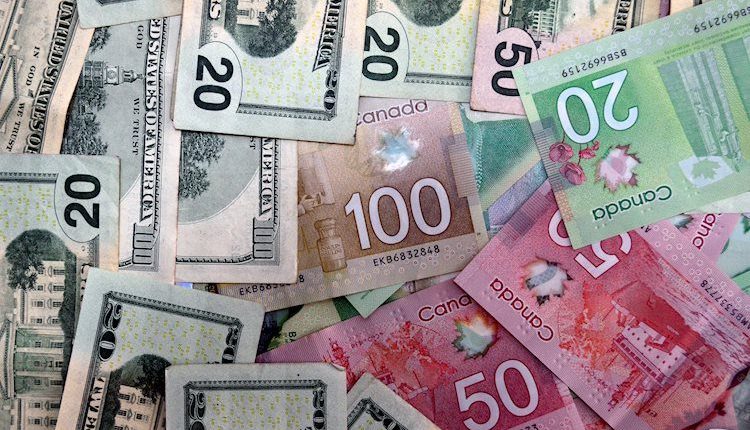- USD/CAD catches aggressive bids on Monday amid a goodish pickup in the USD demand.
- Bets for a slower Fed rate-cutting cycle and rebounding US bond yields underpin the USD.
- Rising Oil prices do little to benefit the Loonie or hinder the pair’s intraday positive move.
The USD/CAD pair regains strong positive traction at the start of a new week and climbs to the 1.4040 area during the Asian session, snapping a three-day losing streak amid a goodish pickup in the US Dollar (USD) demand.
US President-elect Donald Trump’s tariff plans could push consumer prices higher and set the stage for the Federal Reserve (Fed) to stop cutting rates. This, in turn, triggers a fresh leg up in the US Treasury bond yields and assists the USD in staging a goodish recovery from a nearly three-week low touched on Friday, which, in turn, is seen as a key factor acting as a tailwind for the USD/CAD pair.
In fact, Trump threatened a 100% tariff on the so-called ‘BRICS’ nations – Brazil, Russia, India, China, and South Africa. Adding to this, Trump’s pledged big tariffs against America’s three biggest trading partners – Mexico, Canada and China – overshadows a modest uptick in Crude Oil prices. This, in turn, does little to lend any support to the commodity-linked Loonie or hinder the USD/CAD pair’s move up.
The aforementioned fundamental backdrop suggests that the path of least resistance for spot prices is to the upside, though traders might refrain from placing aggressive bets ahead of this week’s important US macro data. The US ISM Manufacturing PMI is due for release later this Monday and might provide some impetus. The focus, however, remains on the crucial Nonfarm Payrolls (NFP) report on Friday.
Canadian Dollar FAQs
The key factors driving the Canadian Dollar (CAD) are the level of interest rates set by the Bank of Canada (BoC), the price of Oil, Canada’s largest export, the health of its economy, inflation and the Trade Balance, which is the difference between the value of Canada’s exports versus its imports. Other factors include market sentiment – whether investors are taking on more risky assets (risk-on) or seeking safe-havens (risk-off) – with risk-on being CAD-positive. As its largest trading partner, the health of the US economy is also a key factor influencing the Canadian Dollar.
The Bank of Canada (BoC) has a significant influence on the Canadian Dollar by setting the level of interest rates that banks can lend to one another. This influences the level of interest rates for everyone. The main goal of the BoC is to maintain inflation at 1-3% by adjusting interest rates up or down. Relatively higher interest rates tend to be positive for the CAD. The Bank of Canada can also use quantitative easing and tightening to influence credit conditions, with the former CAD-negative and the latter CAD-positive.
The price of Oil is a key factor impacting the value of the Canadian Dollar. Petroleum is Canada’s biggest export, so Oil price tends to have an immediate impact on the CAD value. Generally, if Oil price rises CAD also goes up, as aggregate demand for the currency increases. The opposite is the case if the price of Oil falls. Higher Oil prices also tend to result in a greater likelihood of a positive Trade Balance, which is also supportive of the CAD.
While inflation had always traditionally been thought of as a negative factor for a currency since it lowers the value of money, the opposite has actually been the case in modern times with the relaxation of cross-border capital controls. Higher inflation tends to lead central banks to put up interest rates which attracts more capital inflows from global investors seeking a lucrative place to keep their money. This increases demand for the local currency, which in Canada’s case is the Canadian Dollar.
Macroeconomic data releases gauge the health of the economy and can have an impact on the Canadian Dollar. Indicators such as GDP, Manufacturing and Services PMIs, employment, and consumer sentiment surveys can all influence the direction of the CAD. A strong economy is good for the Canadian Dollar. Not only does it attract more foreign investment but it may encourage the Bank of Canada to put up interest rates, leading to a stronger currency. If economic data is weak, however, the CAD is likely to fall.
Read the full article here

